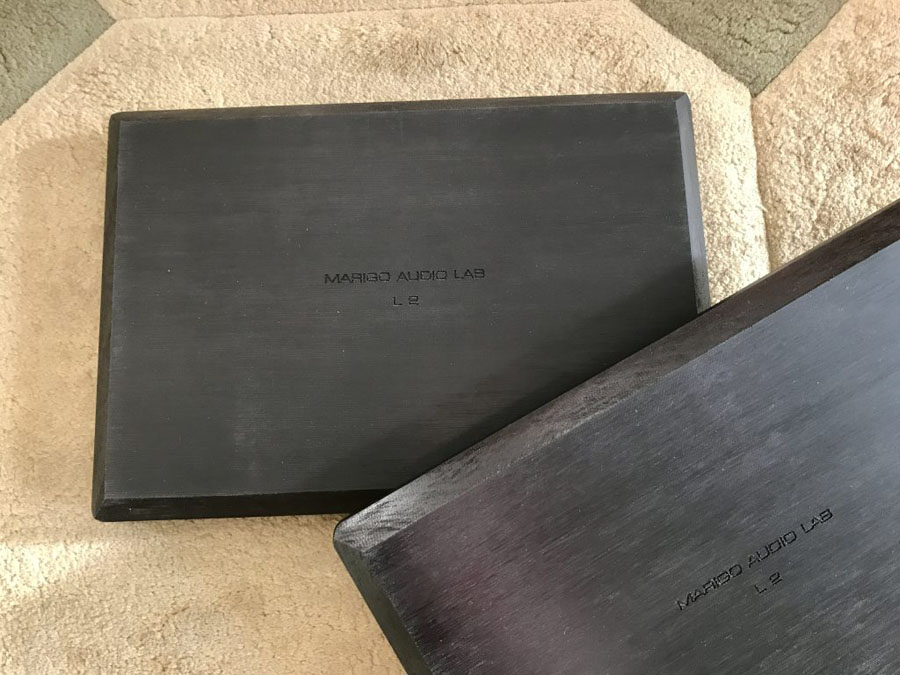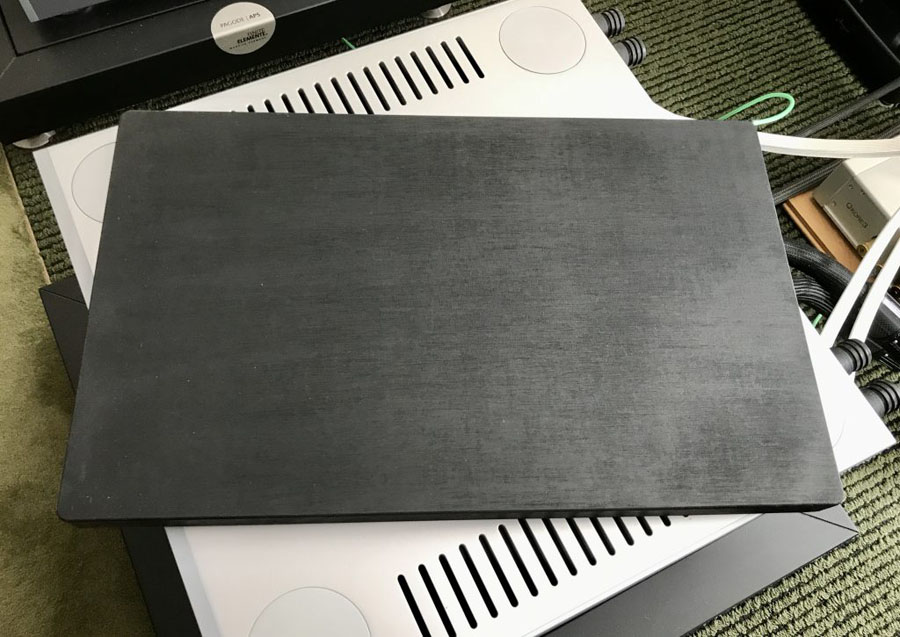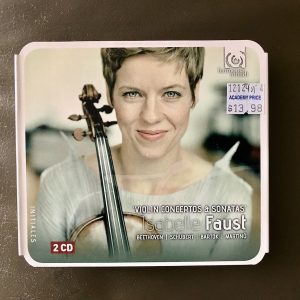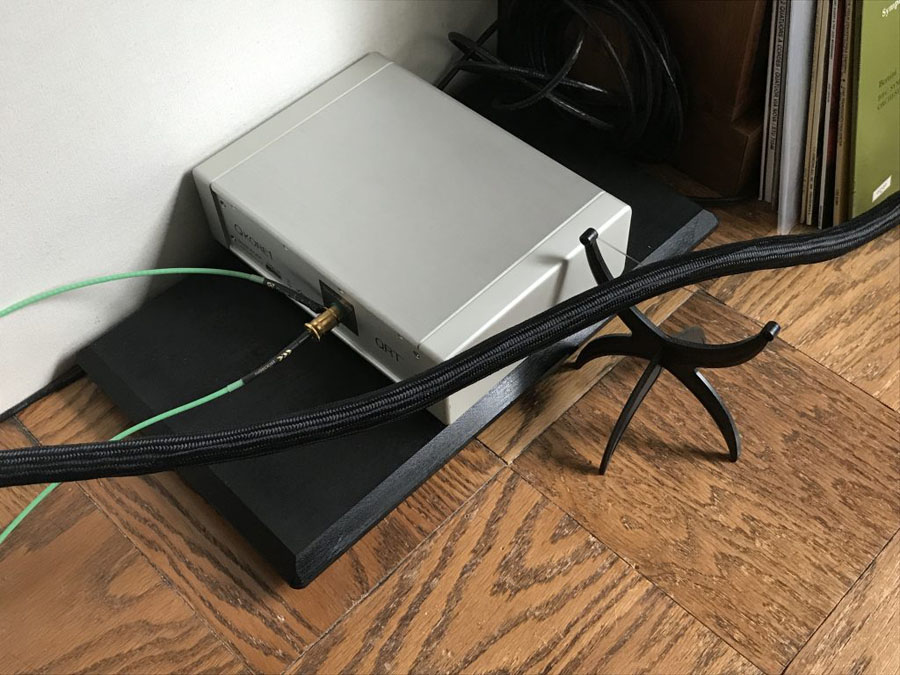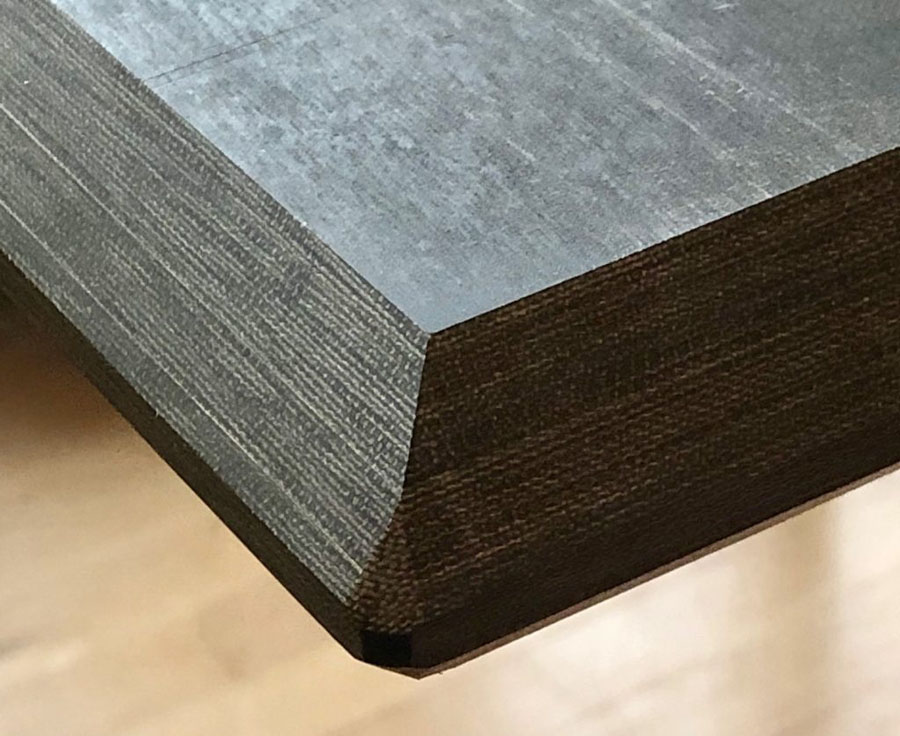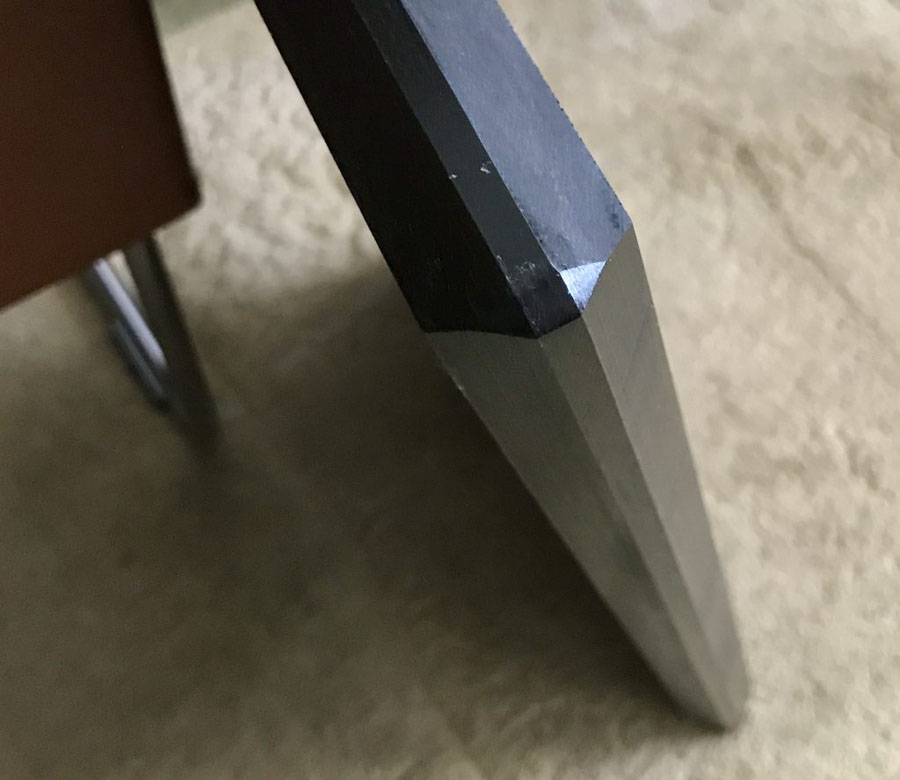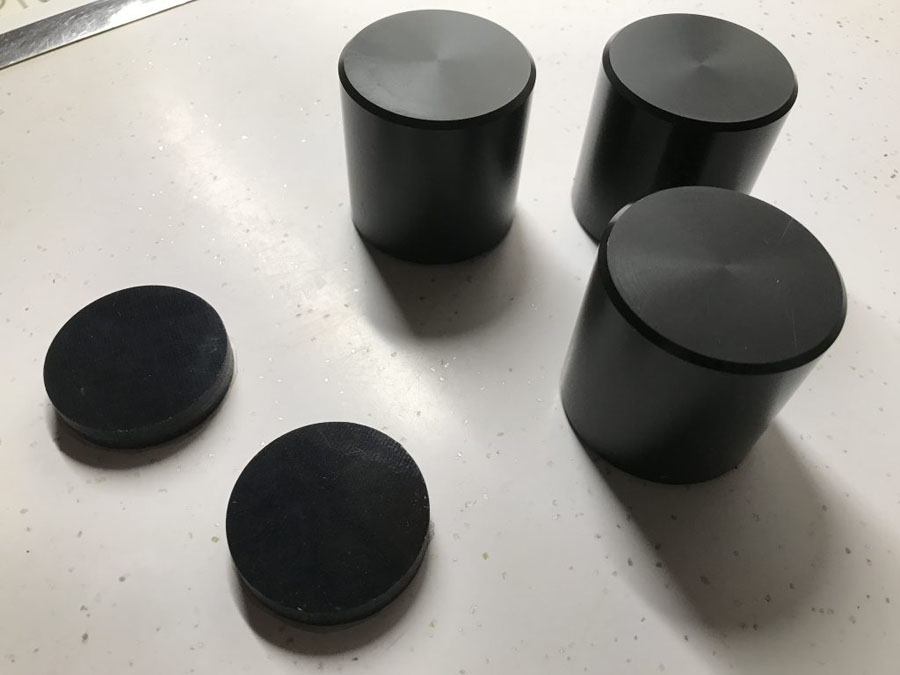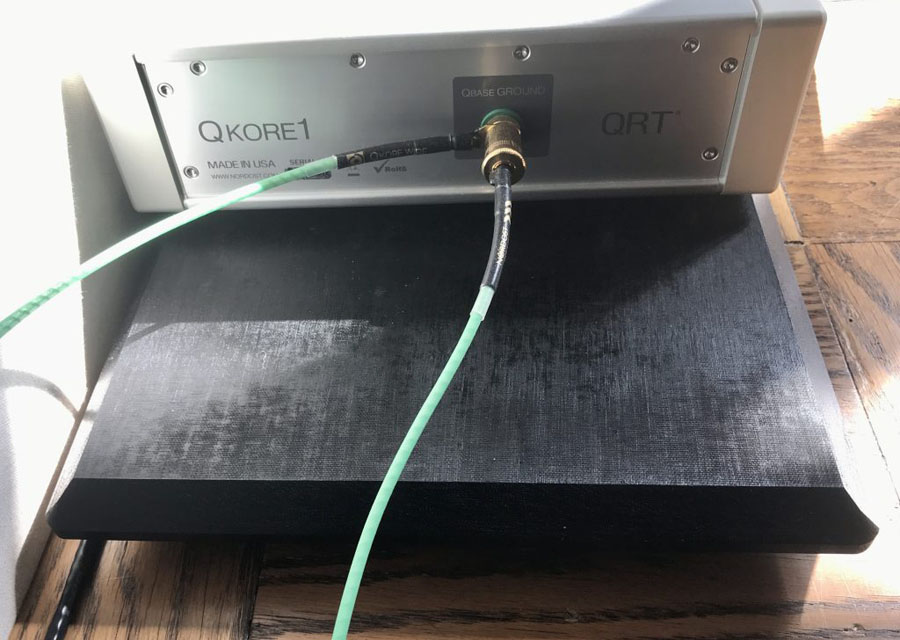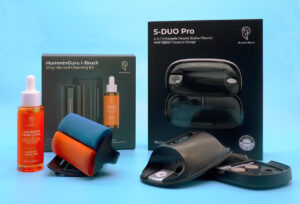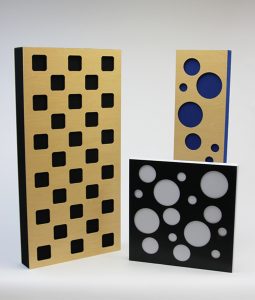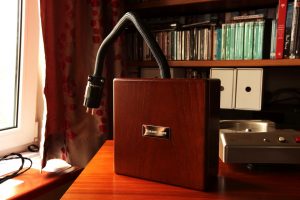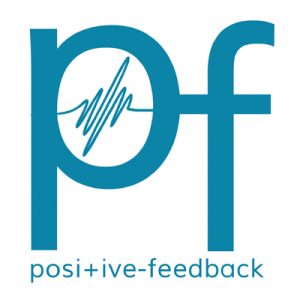The highlight bout begins with King Resolution dancing in his corner taunting Bishop Musicality across the ring, both egged on by PR guys with stakes in the outcome. The handicappers lay odds on the King. Why? Because resolution trumps all in the audiophile arena. These bouts occur regularly in my sound room.
While I love the color and bloom that tubes do so well, I own a solid-state system. Why is that, you might ask? The choice grants me advantages in terms of specs and maintenance, but then I'm left having to play catch-up on the musicality side.
Occasionally the scale is level (it happens sometimes); the household is happy. Soon a parcel arrives: that will be either food, meds, or something audiophile. If it's the latter, a new contest is scheduled and here's how it likely plays out.
The Three-Step Program
In short order, unknown audibles appear. Then the rule of turds kicks in: "If a little is good, more is better, just as long as it's solid." So I double down… maybe some more. Meanwhile, the scale begins to tilt, only I fail to register it. At some point Lynn pipes up with, "What happened to the glorious tone?" I babble a weak excuse, a stalling tactic, as the reality sinks in. Knowing what I have to do, I commence the final leg of the three-step program—recovery. The offender is removed (most of it, anyway) in an effort to regain equilibrium. Sound familiar?
This three-step is the heritage dance of the club, with the only variable being time to completion. It can be a matter of days or stretch out for months. Many members believe the dance is the whole point. The industry is complicit by making products that overwhelmingly favor resolution. Occasionally you stumble upon one that addresses both sides, they are kind of rare. I have one on the floor right now.
Marigo Audio Lab has been selling their Isothermal Platforms for five years. A review was well under way when Ron Hedrich, Marigo's proprietor and resident designer, informed me they were being phased out for an improved design. Ouch! While I can't print my immediate reaction, after considering the matter, I figured I could salvage the review by doing a comparison of the old and new, since many guys still have the older platforms in their systems.
A Discontinued Isothermal Platform
Sound Relaxation
Cosmetically, the discontinued Isothermal Platforms reside in the artisanal or handmade niche. From a performance point of view, I knew right away they were also not mainstream. There are things in its toolkit that neutralize the annoying artifacts introduced by reproduction. They were mimicking the kind of vibe you get at a live event with acoustic instruments in a good hall, which is never tense or jarring. The Isothermal Platform invites you to get comfortable on the couch and stay awhile. Too often audio systems do the opposite, leaving you scanning the room for the nearest exit.
Sure, there are any number of third-party tweaks that tamp down edginess and promote a holistic presentation. Usually it's by introducing an ill-defined aura or bloom that masks it, which always sounds fake. The Isothermal Platform does not introduce blur—quite the opposite. It clarifies the atmosphere and opens up a layer of inner details (you can put a check mark on that side of the ledger), and it doesn't sound fake.
Frequency Integration and the Treble Edge
The Isothermal Platforms principal means of achieving relaxation is by dialing down the contrast ratio. They dig deep and excavate an abundance of details, but you have to go looking for them; they are not thrust at you. Likewise, image borders are a little soft. This is not a spot lit stage with tightly focused images and lots of empty space around them.
What especially tickled my fancy was the wholesale replacement of the edgy high frequencies. The treble calms down to become less irritating, less in your face. Glare is replaced with tones and timbres appropriate to the instrument. Imagine a parseable top-end with details that smack of the real thing! When was the last time you heard that in reproduction?
Now that I'm running a bunch of Audience frontRow cables, I have very fine bass. The Isothermal Platform worked on this band and opened it up, so it spread tentacles into the midrange and is no longer quite as focused on the note's fundamental value. Bass notes become big balls of complex tone, with uncommon solidity and wholeness.
A Caveat
Calming the treble, promoting integration, and bringing out inner details all sound good. However, dialing down the contrast and removing the edginess could be problematic if the recording is already low key. It makes the transient appear to lose speed and impact. Actually, transients are just as fast and hit as hard, but that's the impression it creates.
I put on the Martinů Violin Concerto No. 2, with Isabelle Faust, soloist (harmonia mundi). A pair of the Isothermal Platforms were under two Nordost QKORE Ground Unit chassis. The second movement of the concerto is marked andante moderato. Accordingly, the orchestra played it at a relaxed, walking tempo. The Isothermal Platform exaggerated the easy gait and resulted in a lengthy period with little activity. I confess, there wasn't enough to hold my attention.
The New Isolation Platform: Are You Hearing Inner Voices?
The replacement platforms, called simply L series Isolation Platforms, come in three levels of thickness, weight, performance, and MSRP. A pair of mid-level L2 replaced the pair of Isothermal Platforms under the QKORE chassis. Instantly, the contrast dial reversed direction and the unchanging, midrangey miasma of the andante moderato was dispelled. A plethora of vanishingly small events made themselves known and treble highlights appeared, while the softly rocking motion of a barcarolle (like a boat on water), was exposed, reminding me of the ebbing and flowing wave-like motion in Debussy's La Mer. Our ears perked up; this was really interesting. The lower contrast of the Isothermal Platform had kept this obscure.
Edge detail of the L3
The L3 Isolation Platform Arrives: Steady State be Damned!
In due course, I got to try the L3 platforms under the QKORE chassis. To demonstrate the acuity of the top-of-the-line platforms, I'll conjure Isabelle Faust's bow on the violin in the Martinů Concerto. Without any platform, sustained notes from the instrument were more or less steady tone, Isabelle's bow is drawn across the strings with unvarying pressure. When the original Isothermal Platform was in use, there is evidence hinting at vibrato. The L2, in turn, brings out very small variations in sound pressure level and clarifies the vibrato. With the L3, even smaller minutia are excavated and we've arrived at a point where the sustain cannot be described as an unwavering tone. This is heady stuff: now we're deep into the ligaments and tendons of the musician's craft.
Dynamics
One last comment about the L2 and L3 platforms regarding dynamics. The first movement of the Martinů opens with a powerful blast from the full orchestra, including bass drum. With no platforms, it was loud and strident, forcing me to ride down the volume control. The L2 grows dynamic range and the L3 doubles down on it, while they both purge nearly all of the stridency.
Edge detail of the L2
These Platforms are Powerful
For ergonomic reasons, I didn't test the platforms under the major components on my racks, but I did a great many experiments with gear residing on the floor. These platforms are powerful. Sometimes the sound enhancement was such a boost it struck us as too much, approaching hyper-realism. Perhaps you won't have the same reaction; perhaps we could have acclimated over time. At any rate, when it clicked it was so good as to make the effort worthwhile. Both original Isothermal Platform and replacement L2 Isolation Platform were optimally dispatched under the Nordost QKORE or QBASE power distributor chassis. But neither worked out under my PowerStar Horizon power distributor. With the L3, the situation reversed. We didn't care for it under the QKORE, but it turned out to be excellent under the PowerStar Horizon. Expect to do some experimenting with placement. (Fortunately, the manufacturer offers a 30 day home audition with no restocking fees.)
TerraStone on right/ZSD-31 on left
Optimization with Footers: Make a Sandwich
For the tweakers among us, there is ample opportunity for playtime with footers. The 14 lb. aluminum QKORE1 chassis began on the wood floor supported by a trio of edenSound TerraStone Pure Cylinder footers. The TerraStone Cylinders were swapped out for an Isothermal Platform, as described above. Ron suggested making a sandwich using Marigo's ZSD-31 Acoustic Discs ($89/set of 3) above and below the Isothermal Platform. This was better.
For this application, the ZSD-31 discs are only serving as a protective buffer—you DON'T want to activate them. To that end, leave the paper barrier on the adhesive side of the disc so it will not adhere to the IP.
Further note: Ron explained the platforms were developed after he launched the new Marigo Mystery Feet, which are even more powerful than the platforms. The E3 Mystery Feet ($1199/set of 3) took a lot of time and effort to develop, but to achieve optimal performance they needed something reliable under them. Ergo, he designed the new platforms. Sounds intriguing (to be explored in a follow-up).
QKORE on an L2 Platform
Cosmetics & Handling
What is a Marigo Audio Lab Isolation Platform? I asked Ron for a tech statement:
Marigo Audio Lab offers three levels of isolation platforms. The L3 is our best performing platform consisting of 40 alternating thin layers of an extremely stiff proprietary, high tech composite, which is shaped into a microscopic wave pattern, then combined with a unique heat cured resonance damping material.
The L3 is approximately 1.5 inches thick, with a large chamfer machined on the top and bottom perimeter. These chamfers disperse low-level vibrations that can propagate longitudinally within the L3 platform, and redirect them through many layers to complete the dissipation. The L3 is finished with a proprietary organic lacquer which requires several days for each coat to dry—a slow finishing process, but sonically worth the extra effort.
The many alternating layers of our neutrally balanced L3 platforms promote a lowered noise floor, greater dynamic range from subtle nuanced sounds to clean macrodynamic expression, deeper bass, and zero smear or bloat at any frequency. There is inherent integration of timing across the audio bandwidth, yielding improved rhythm and pace for every genre of music.
The L2 is our second best performing platform. It is exactly like the top model L3, only with 32 layers and approximately 1.2 inches thick. The introductory L1 platform has 25 layers and is approximately 1.0 inch thick.
It took us ten full years of R&D to complete development of our isolation platform design. The goal was to help your system express the intent of each composer and artist, and the results speak for themselves. It was worth it.
The textured matte finish of the replacement L Series Isolation Platforms is a major cosmetic upgrade from the discontinued Isothermal Platforms, which have a varnish finish that is far from the uniform surface of a mass-produced item. Plus, the L Series now have engraved product identification on one side. Take care when using pointy footers, as the finish is susceptible to light scratching (though I'm told the platform material itself does not dent or gouge at all).
Conclusion
Platforms, footers, tuning dots, room treatments—audiophiles love to putter about, swapping products, and noting differences. Tweaking is integral to the hobby. Some think it's the whole point. I once asked a fellow about a new footer he tried. "What happened to the sound—did it get better or worse?" He replied, "I'm not sure. But I heard a difference…That's good enough." Hearing a difference establishes your bonafides.
Well, I heard a difference when I put a Marigo Isothermal Platform under a Nordost QKORE chassis, and there was no question in which direction the sound moved. The platform doesn't reshuffle the sonic equation, it simply finesses what's already there; smoothing away roughness in the treble and promoting frequency integration.
If you own one of the discontinued Isothermal Platforms, you'll find the same features present in the replacement product, but better in every way. Instruments seemed to bloom with a constant swirl of shifting micro dynamics when I swapped in the Level 2 Isolation Platform. With the Level 3 Isolation Platform, the innermost action of the instruments was exposed as never before, bringing us closer to their real world behavior. You don't often encounter this level of acuity in reproduction.
These platforms are powerful. I found some degree of placement experimentation useful, so be prepared to putter about. But when you hit upon a synergistic placement, the benefits are indeed significant. They invite you to sit down, chill a while, and be amazed. With a few of the L2 and L3 platforms, the competing demands of musicality and resolution were satisfied, and my soundroom was at peace. The King and the Bishop were quietly glowering in their corners, awaiting the next bout.
L Series Isolation Platforms
Retail: Level 1 (13" W x 18" L x 1" H) $899
Retail: Level 2 (13" W x 18" L x 1.2" H) $1169
Retail: Level 3 (13" W x 18" L x 1.5" H) $1459
Retail: ZSD-31 Acoustic Discs $59/set of 2
Retail: E3 Mystery Feet $1199/set of 3
Marigo Audio offers the Isolation Platforms and Mystery Feet factory direct. Other sizes are available in all Platforms. A 20% introductory discount is in effect thru the end of 2022 on all Platforms. Package pricing available with the Mystery Feet. A 30 day home audition is offered with no restocking fees if returned.
Marigo Audio Lab
Washougal, WA 98671
360.835.9239




